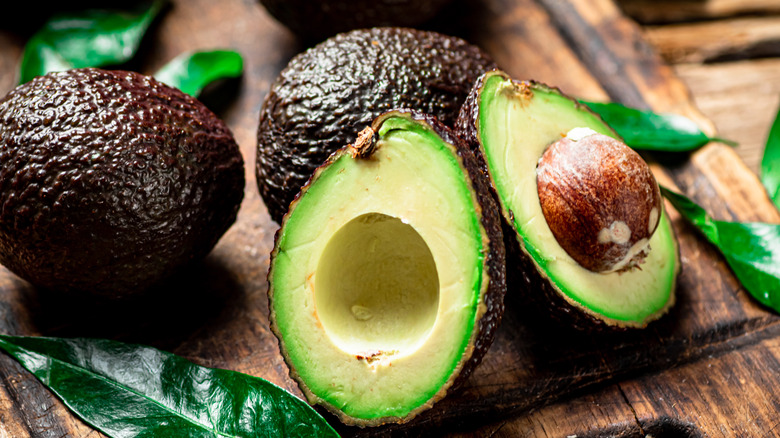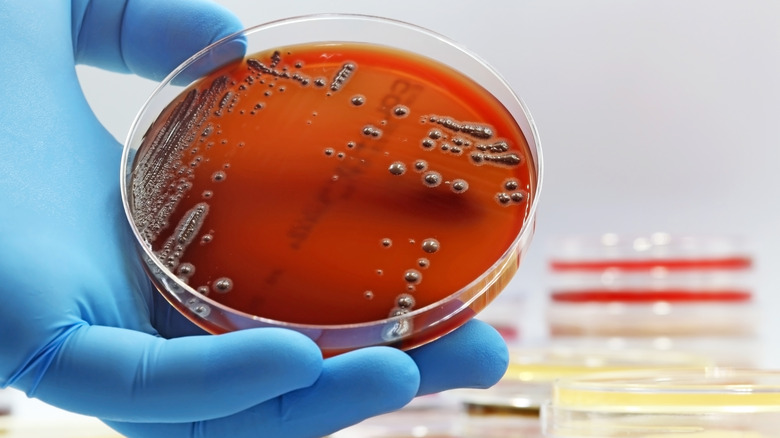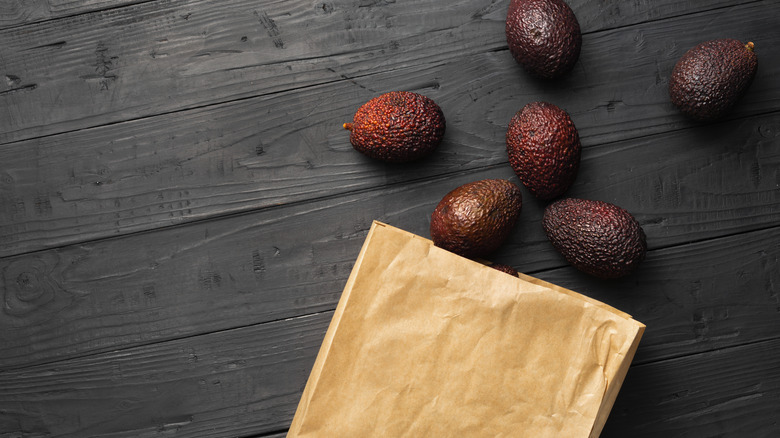We Are Begging You To Stop Storing Avocados In Water
We all want that magic fix, right? Imagine an avocado that stays green and fresh-looking for more than just a couple of hours — that would be a game changer. So when I stumbled upon a viral trick promising exactly that, I was hopeful: Finally, the answer to my avocado woes. The hack seemed simple enough — just submerge your sliced avocado in water and refrigerate it. Yet, to my surprise, this seemingly ingenious trick turned out to be a potential recipe for disaster. Storing avocados in water creates the perfect breeding ground for harmful bacteria like Salmonella and Listeria to thrive. Hello, food poisoning!
The internet brims with health and nutrition tips, but not all are vetted by experts. The consequence? Dangerous trends. Consider the TikTok trend of 2022 where users stored garlic in oil to prolong its shelf life. It sounded practical, yet lurking beneath was a serious risk of botulism — a rare but severe illness that can cause paralysis.
Now, fast forward to 2024, and the latest sensation involves submerging cut avocados in water to slow browning. This supposed "hack" has received thousands of views on social media. But experts are sounding alarms once more, cautioning against another dangerous and potentially life-threatening trend.
The scary truth behind the trend
The trendy idea of submerging avocados in water to prevent them from browning overlooks a crucial concern: avocado skins can actually harbor bacteria. According to the FDA, Listeria monocytogenes was detected on nearly 18% of tested avocados, with Salmonella found on 0.74%. Even more concerning, soaking avocados in water can allow Listeria monocytogenes to seep into the flesh beneath the skin, even if you wash the avocado afterward.
"Bacteria like listeria and salmonella are living creatures. They need the right temperature, food, and most importantly water to grow," Matt Regusci, the principal compliance officer at New Era Partners, told Everyday Health.
These bacteria are notorious for causing a range of unpleasant gastrointestinal issues. Listeria can cause fever, muscle aches, nausea, and diarrhea, while Salmonella can result in fever, diarrhea, and abdominal cramps. Both can escalate into severe illnesses and even become life-threatening. Those most at risk include people with weakened immune systems, pregnant women, newborns, and older adults.
The best way to store your avocados
So how should you store your avocados to actually present browning safely? Here's what you need to know.
First things first: where you store your avocados depends on how ripe they are and whether they're whole or sliced. If your avocados are unripe, leave them on the counter or speed up the ripening process by placing them in a brown paper bag. Once your avocados are nice and ripe, it's time to move them to the fridge. Keep them in the crisper drawer to maintain their freshness for an extra one to three days. If you've already sliced your avocado, don't fret — simply brush the exposed green flesh with lemon or lime juice, wrap it tightly in plastic wrap, and voilà: No more browning.
For diced avocado, the trick is to store it in an airtight container lined with a paper towel soaked in lime juice. Cover it with plastic wrap and pop it into the vegetable drawer of your refrigerator to minimize exposure to air. And remember, a brown avocado might not look appetizing, but it's still perfectly safe to eat. So before you jump on the latest TikTok food trend, make sure to do your homework first.


